Review and images by Animal Lover; edited by bmathison1972
Among the most dangerous and feared animals are Nile crocodiles (Crocodylus niloticus). They have always instilled fear. And this fear is justified. A first fact about Nile crocodiles is that they can measure up to a maximum of 6 m (20 ft) which makes it the second largest extant reptile in the world. Moreover, it uses many hunting tactics which include sometimes hunting cooperatively, lying in wait at edges of rivers and lakes for preys to come within range to drink or try to cross, and staying still underwater to ambush their prey. Furthermore, their powerful jaws, filled with 64 to 68 sharp, pointed teeth can exert a colossal biting force for gripping and dismembering prey. Also, they are formidable predators which do not hesitate to attack large animals such as a full-grown buffalo (even during the dinosaur era, the colossal prehistoric crocodilian Deinosuchus preyed on dinosaurs). However, the hippopotamus, equally as dangerous and fearless, can kill a Nile crocodile. And finally, the highly acidic juices in their stomachs digest everything, including hair, bones, hooves and horns of their prey. Hopefully, we don’t lose an arm or leg while taking a look today at the 2015 ‘leaping’ Nile Crocodile figure by CollectA.
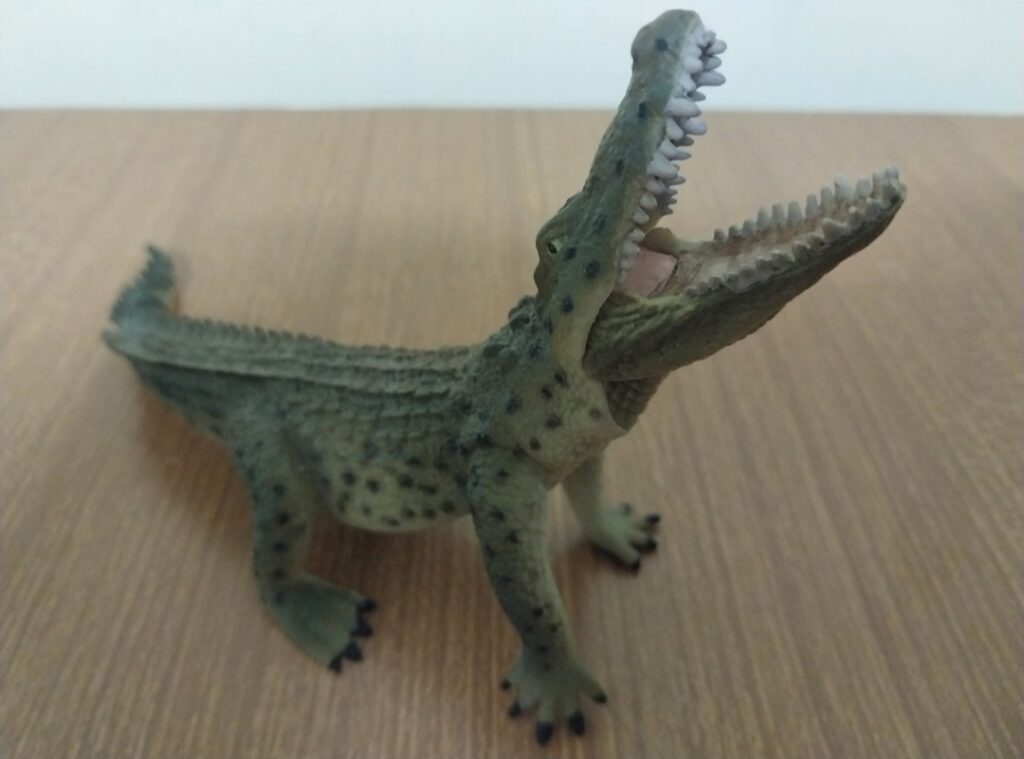
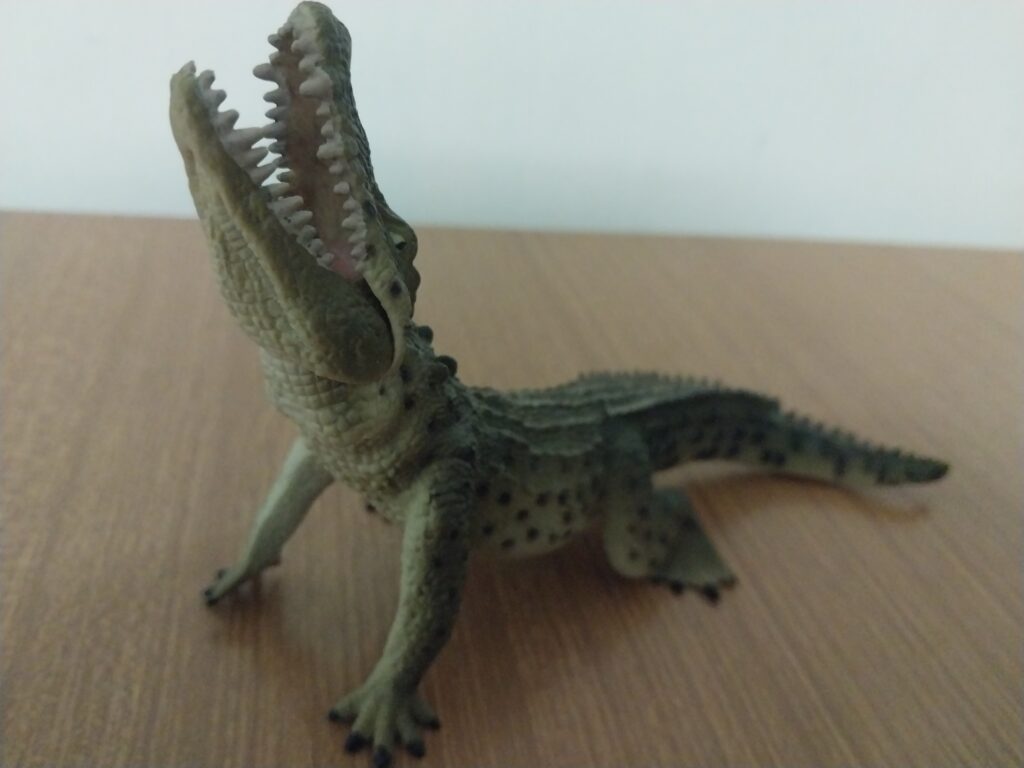
This figure measures 18 cm in length and 10 cm in height. The colour scheme consists of olive green for the body merging into beige for the underside of the body and black spots on the head, limbs, flanks and tail. Underside, the soles and cloaca are highlighted by a light brown wash. The claws are black. The eyes are light green with black, slit pupils, the teeth are cream, the inside of the mouth is pink with a wash of light brown is applied to the jaw palates. In terms of detailing, I feel it could be better. For example, the underbelly scaling is too small and uniform. But apart from this, the level of detailing is decent. Scales of varying sizes and osteoderms are present, and the osteoderms become raised or the triangular ridges become more prominent from the base to the end of the tail, eventually narrowing into a single row towards the near end of the tail.
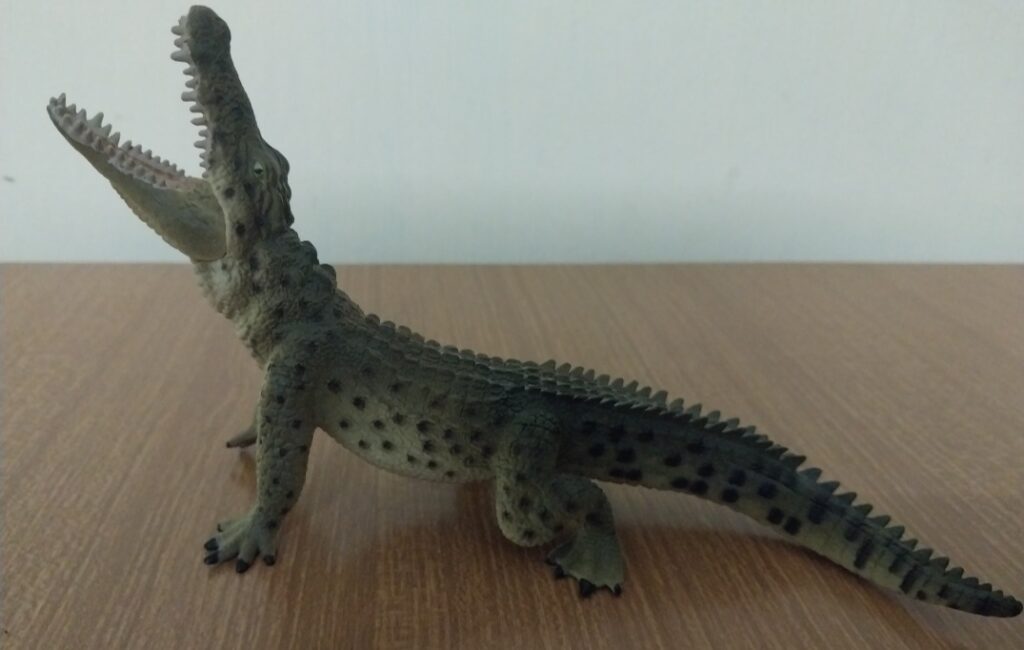
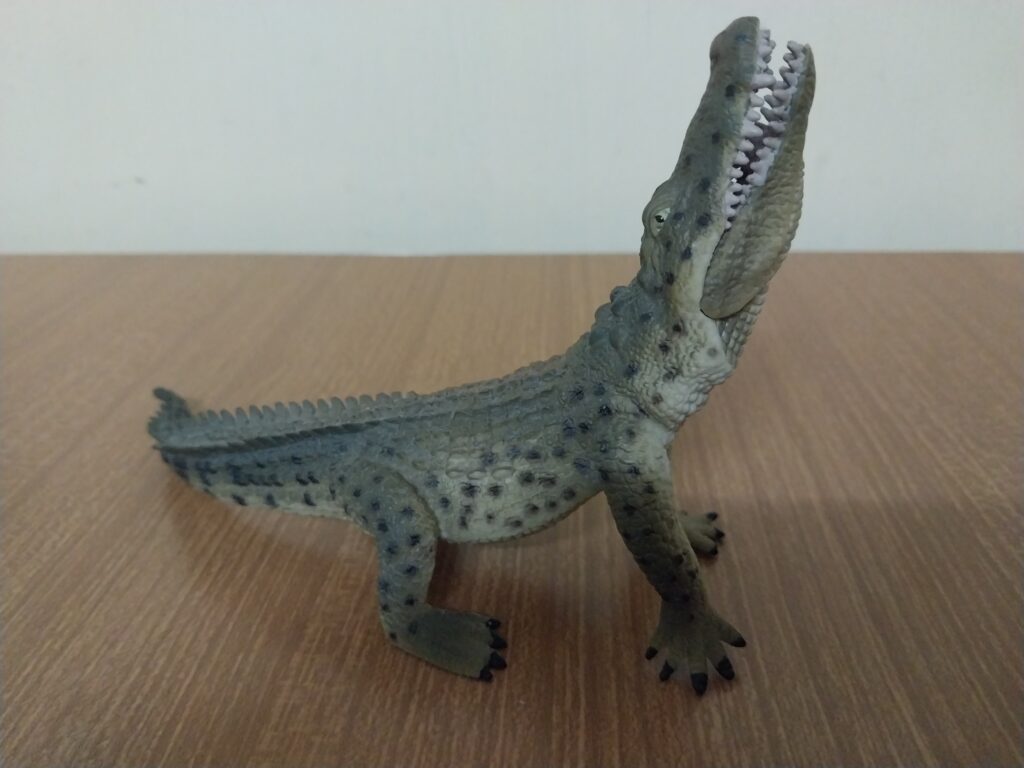
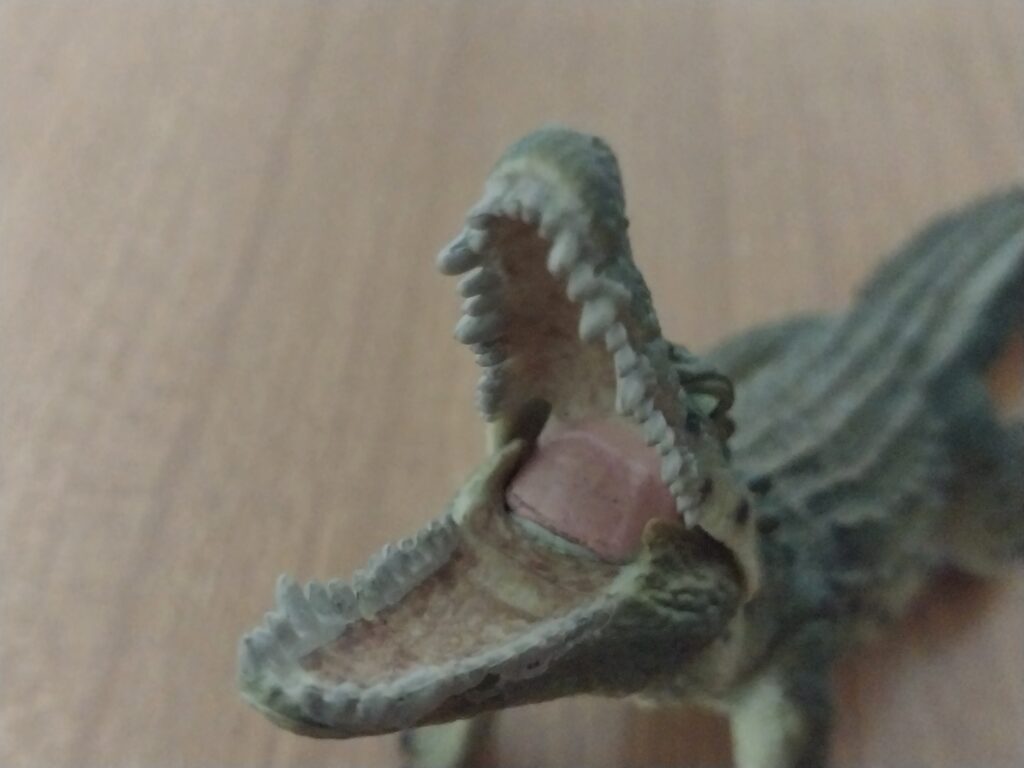
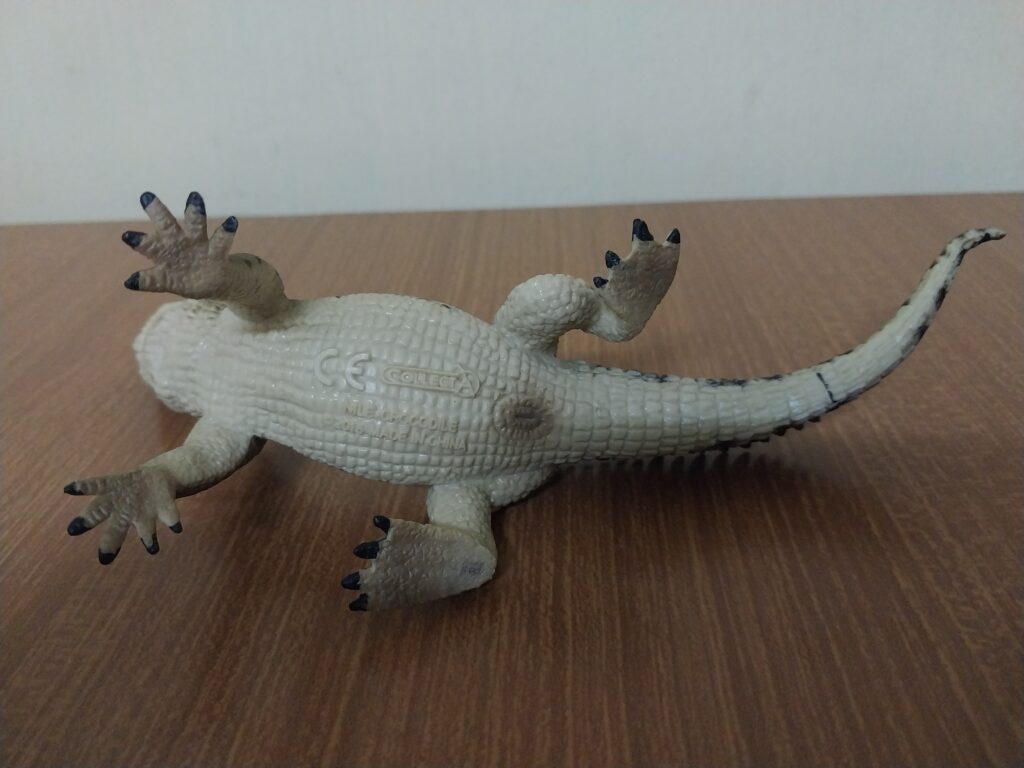
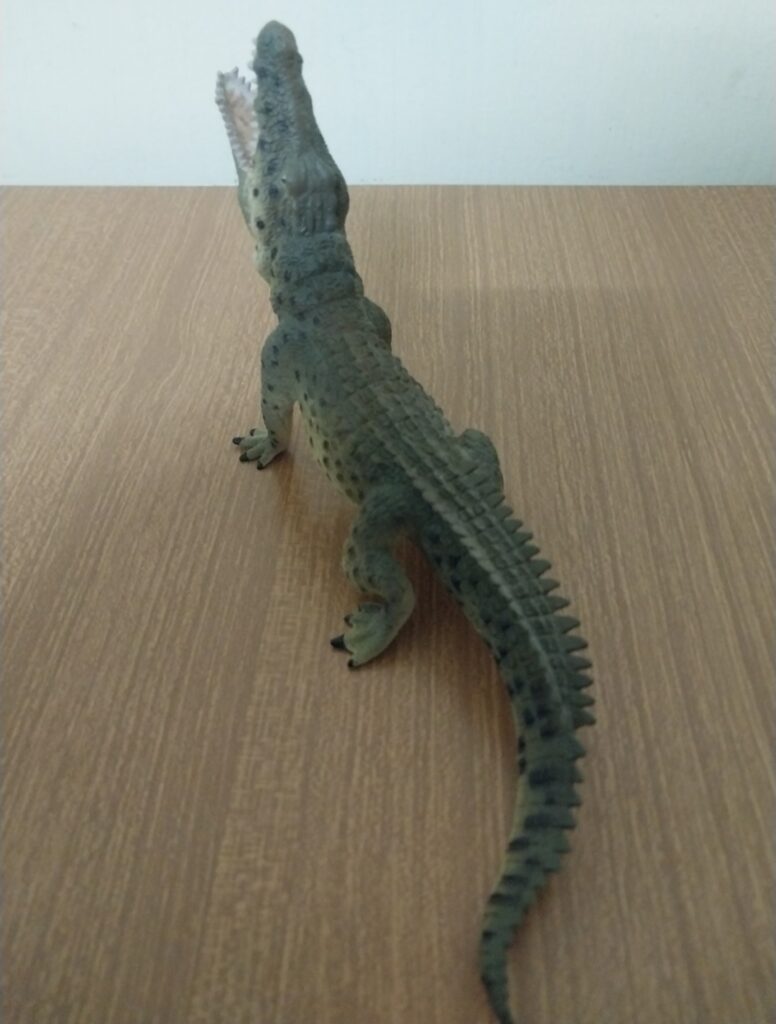
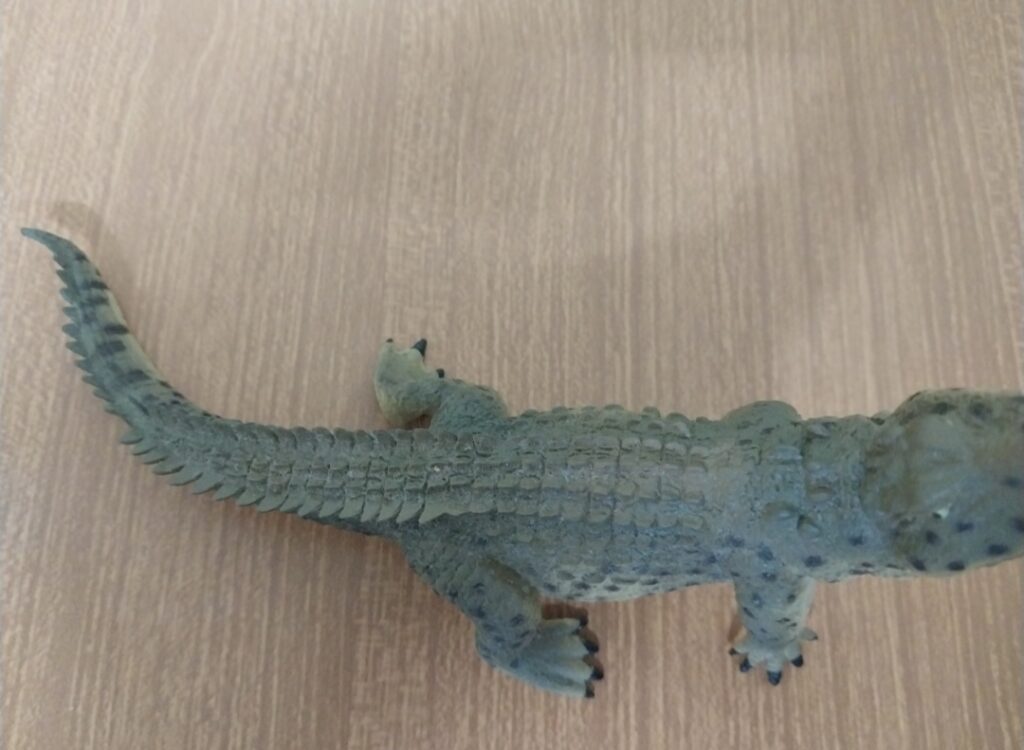
The main appeal of this figure is perhaps the pose. Crocodiles’ streamlined bodies, muscular limbs and powerful tails provide the required force to do such impressive leaps. This leaping behaviour is used for several purposes in crocodiles. It allows them to ambush and capture prey off guard. Leaping is also used to assert dominance in crocodiles; either to settle territorial disputes or to intimidate rivals or threats. This figure from CollectA perfectly captures the moment of propulsion during its leap, with its front legs fully extended and pressing upwards, with the back legs crouched and with the head raised upwards. It is as if it is bursting up from the water swiftly, ambushing and seizing unlucky prey such as wildebeest or zebra with its mighty jaws, dragging and drowning it in the water and dismembering it. Or maybe grabbing what a zookeeper is throwing at it. It’s up to you to decide. To enhance further realism and playability, the lower jaw is articulated. This gives the figure a dynamic and captivating pose, making it unique and stand out from other crocodile figures with the usual sprawling pose on the ground.
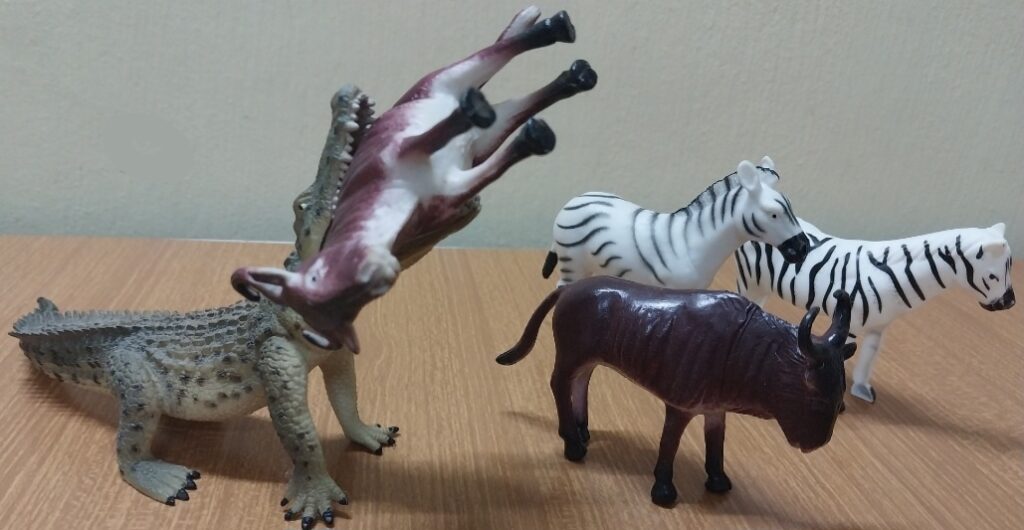
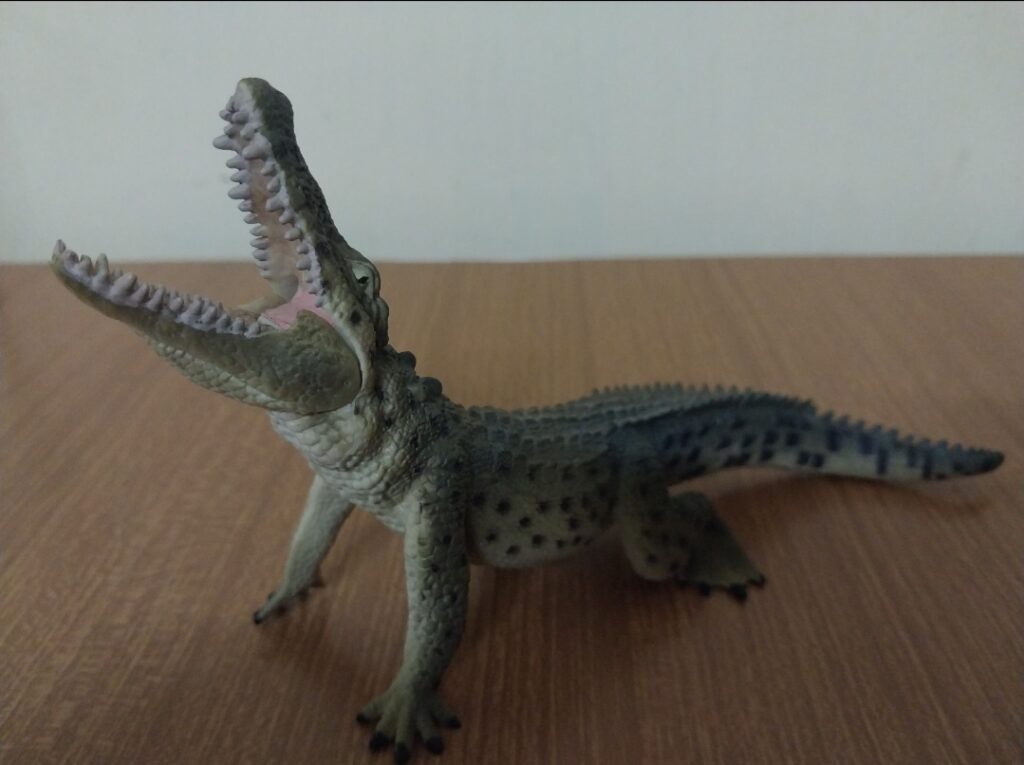
All in all, it is a decent crocodile figure. As said earlier, the main appeal of this figure for me, and I’m sure it may be the case for others as well, is the dynamic and unique pose. It is what sets this crocodile figure from other ones, usually depicted in a sprawled pose. This pose really shows this formidable predators in all its prime and glory. It would not only make a fun toy for children, but also a standout piece as a representation of a Nile crocodile in a animal figure collection. It is available on many online sources to purchase.
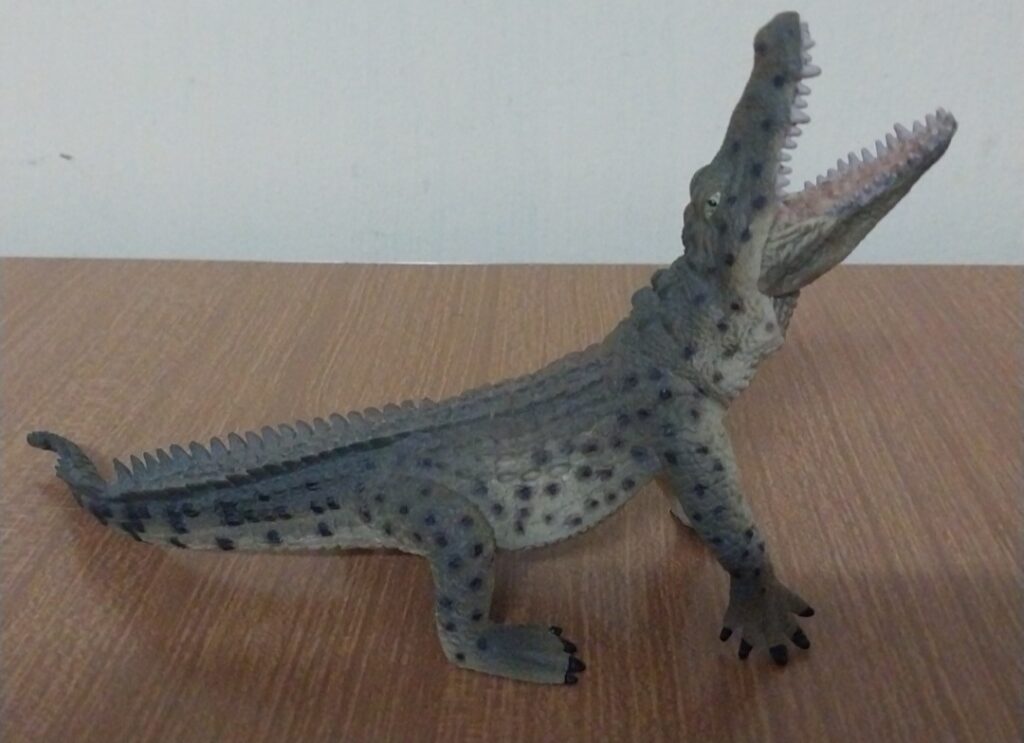
Disclaimer: links to Ebay and Amazon on the AnimalToyBlog are affiliate links, so we make a small commission if you use them. Thanks for supporting us!



